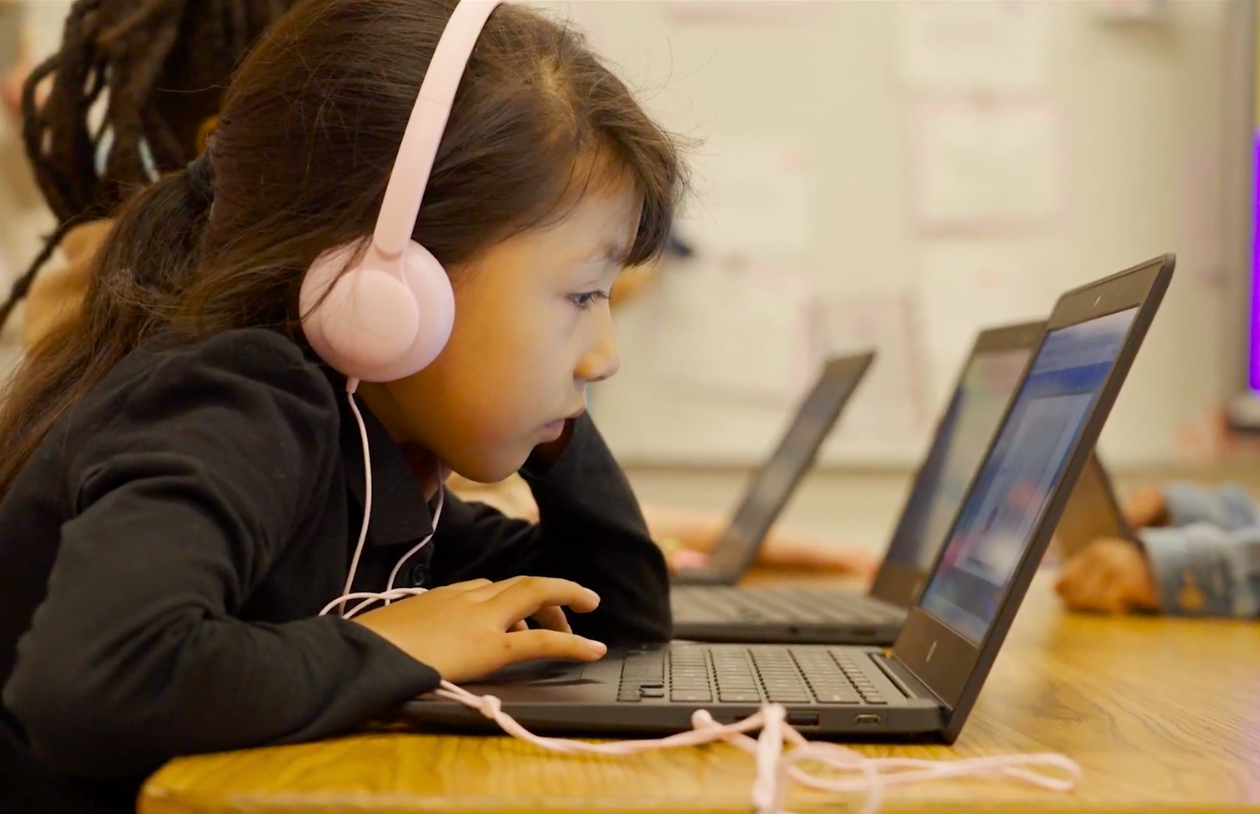8 Types of Technology-Enhanced Items That Engage Learners
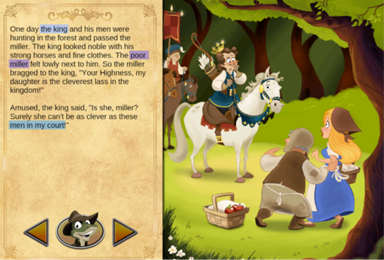
Engage Learners with Technology-Enhanced Items
Multiple choice assessments have long frustrated me. As a student I was usually one of the last to finish a test because I agonized over the answer choices and often became irritated because it felt like the questions were meant to trick me. I was sure I knew so much more than the questions were asking me to show.
Then as a teacher I came to learn that multiple choice questions are designed with distractors and often have two or more answers that could be correct but one answer that is the best choice. In a way multiple choice questions are tricky. I also thought my students knew so much more than those multiple choice questions were asking them to show. I felt like they were missing opportunities to do more than darken circles on a bubble sheet.
I wish my students had been more engaged in their assessment experiences: I wish they had more opportunities to interact with the content, to activate their critical-thinking skills, and to construct responses rather than merely selecting and bubbling answers.
The good news is today’s students have those opportunities thanks to next-generation assessments and technology-enhanced items (TEIs). In my last blog post, I explored what TEIs are, the purposes they serve, and how they benefit both students and educators. If you missed that post, be sure to check it out for an introduction to TEIs.
Because TEIs are integral to next-generation assessment design, they are changing the landscape for students and educators. They are powerful tools not only for measuring student learning outcomes but also for engaging students in the assessment process. Let’s explore a few of the most common item types and how students interact with them.
Multiselect
While this item type is related to the standard multiple choice item, the multiselect item presents a task where students may select more than one option. Multiselect requires students to practice flexible thinking and consider multiple responses.
An example reading passage from Istation with multiselect answer options.
Drag and Drop
This item type requires students to “grab” an object, “drag” it to a new location, and then “drop” it. Drag and drop is versatile and may present students with opportunities to order, sort, match, and group content.
Example drag-and-drop math problems ask students to sort numerals in ascending order and to classify 3D shapes.
Hot Text
You might be wondering where this item type got its name. The hot spot tool used to develop this item creates clickable or “hot” locations within a text. Hot text requires students to interact with text by highlighting or selecting elements of longer texts, such as words, phrases, or sentences, and provides a way for students to engage more authentically with text through an annotation-style response.

Example storybook art beside a reading passage with specific words highlighted via hot-text tool.
Hot Spot
While this item type is similar to hot text with its clickable functionality, in lieu of text, students interact with graphics and visuals by selecting elements or objects from within the larger image to demonstrate knowledge and understanding.
Example activity shows clickable hot-spot items on a desert background.
Text Entry and Extended Constructed Response
These item types require students to generate and type their responses in text boxes. Text entry tends to be used for short responses of a single word, phrase, or sentence, while extended constructed response tends to be used for longer responses of multiple sentences and paragraphs.
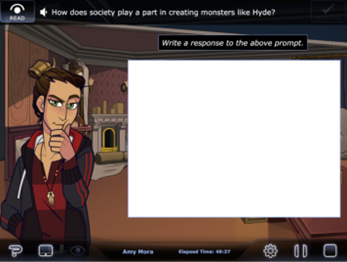
Example of extended constructed response to a question relating a reading passage to real life.
Equation Editor
This item type requires students to generate equations and inequalities as their response. An equation editor provides a way for students to more authentically construct a response to a mathematical problem similar to the way they might during classroom instruction.
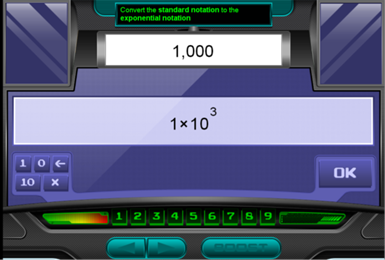
Example of a math problem where students are required to generate an equation as their response.
Inline Choice
This item type makes use of drop-down menus within questions and functions in a fill-in-the-blank fashion. Inline choice requires students to click on the drop-down menu in a line of text and make a selection to complete the statement.
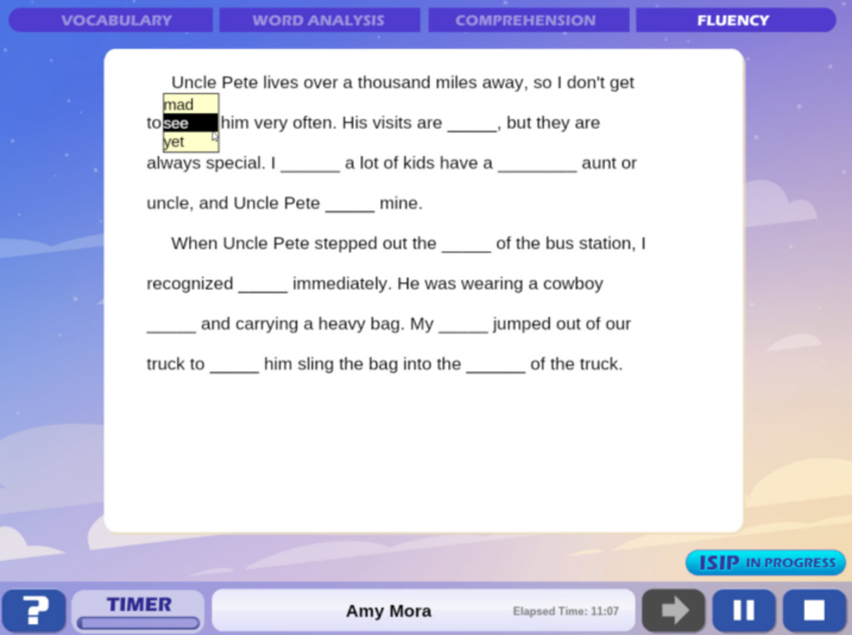
Example of a drop-down menu within one of Istation's reading passages.
Multipart
This item type is a single item made up of two or more parts. Multipart items require students to apply their responses from one part of the item to the next, as the item successively builds in complexity and depth. Multipart items may use more than one item type in the various parts of the single question or task. For example, the first part of an item may require students to engage with hot text while the second part requires them to generate a constructed response.
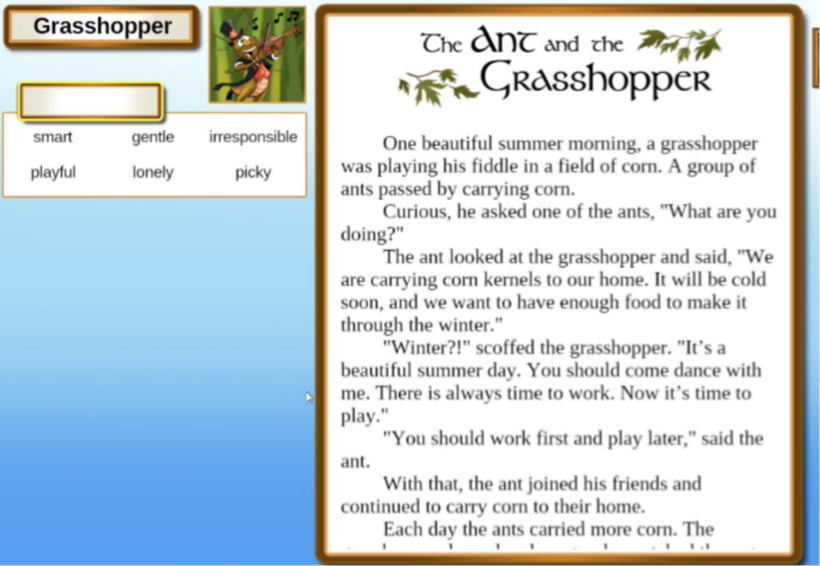

Example reading question where students are required to apply their responses from one part of the item to the next.
Today’s learners have more ways than ever to show what they know, and educators have nearly endless opportunities to use technology for the purpose of enhancing students’ learning and assessment experiences. We live in a digital age with students who are digital natives. It is natural and necessary for our curriculum and assessments to evolve to meet the needs and preferences of our students.
At Istation we are committed to ensuring students have rich, sustained opportunities to engage with learning tasks and assessments that build their digital literacy skills, activate their critical thinking and cognition, and prepare them to be successful on high-stakes, next-generation assessments. Most of all we are committed to ensuring the students we serve see their learning as something more than just filling in a multiple choice bubble.
All of the TEI examples contained within this blog come from Istation’s digital content or assessments.
Learn more about building TEI proficiency with our on-demand webinar “Strategies for Using TEIs to Improve Student Engagement” and discover how Istation is increasing assessment validity with next-generation TEIs.
Read more from the AI & The Reading Brain Blog
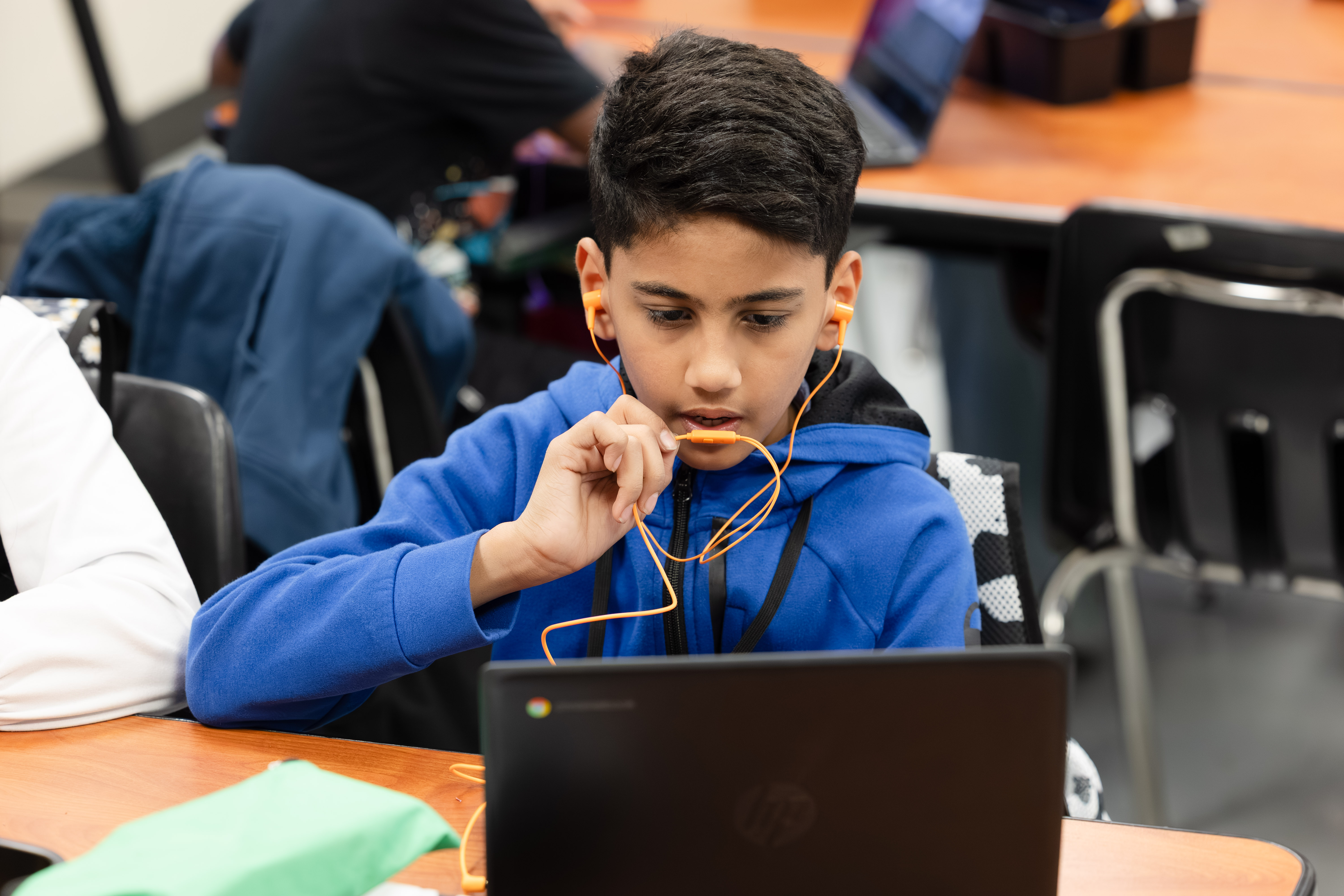

.avif)
